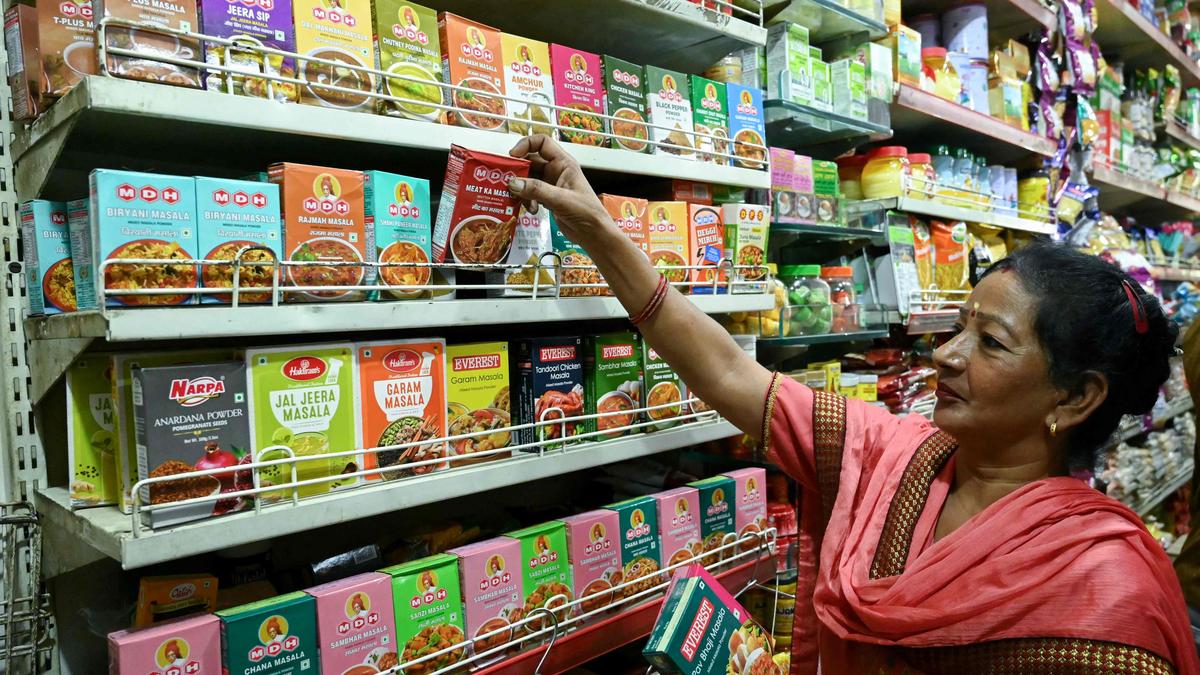
What is the current status with respect to spice exports? | Explained Premium
The Hindu
The Hindu explains the status of spice exports from India after Hong Kong and Singapore recalled MDH and Everest spice products
The story so far: Last month, Hong Kong and Singapore recalled certain spice mix products of the MDH and Everest Group allegedly over the presence of a higher than prescribed level of the sterilising agent Ethylene Oxide (ETO). The Indian authorities have now initiated several measures to ensure that Indian spices comply with food safety standards of the importing countries.
Ganeshan Varadarajan, promoter of Lifespice, says that India does not use ETO as a pesticide but only as a sterilising agent to reduce microbial load in finished (spice) goods. Most of the agro products, including spices, are heaped in mandies (auction yards for farmers) where they are contaminated by human, bird, reptile and insect contact. Many of the large factories receive material from the mandies, which is then fed on automated lines. It leaves them with high microbial levels and forces them to opt for ETO sterilisation. However, the contamination levels can be reduced early through the processes adopted for value addition. Consumers should start looking at the quality of products and not just the price, he says.
A quick export estimate data available with the Spices Board India shows that India enjoys a significant share in the global market for spices and spice products. In 2023-2024, India exported spices worth $4.4 billion (nearly 14 lakh tonnes), which is 12.3% higher than the financial year 2022-2023. Data shared by the United Planters Association of Southern India reveals that chilli, spice oils and oleoresins, curry powder and paste, cumin, mint products, cardamom and pepper are some of the largest exported spices and spice products in the financial year 2022-2023. In terms of production, garlic, ginger and chilli were the top three spices produced in FY23.
China, Bangladesh, west Asian countries and the U.S. are important markets for Indian spices.
An office bearer of the Federation of Indian Spice Stakeholders pointed out that Singapore and Hong Kong had not banned the Indian products, but only recalled them. Exports have resumed to these countries and hence there may not be much impact in the coming months because of this issue. India’s share in total spice production globally is about 70%.
Countries have different standards for ETO and maximum (pesticide) residue levels (MRL). The European Union has stringent norms for both ETO and MRLs while Japan largely sources only organic products. The industry has been talking to the Indian government demanding discussions with the EU to relax the norms in order to boost Indian spice exports to the EU market.
A section of chilli growers in Telangana said the issue is not likely to affect farmers much as most of them do not export directly. Further, Indian food exports have faced several challenges in the past too because of stringent norms of the buying countries. A planter pointed out that cardamom and black pepper are cultivated as inter crops with tea, coffee or rubber. The MRL is stringent for these main crops and hence the two spices are able to meet the norms. Manufacturers of spice mixes and pastes should look at sourcing genuine Indian grown spices rather than using imported spices. Further, they should be cautious when they import spices from other countries and export value added products, said a cardamom grower in Kerala. A turmeric exporter based out of Erode in Tamil Nadu says that while ETO is permitted by the U.S., the EU seeks steaming as the method for sterilisation. But while the cost of using ETO as a sterilising agent is ₹5 per kg, for steaming it is ₹20-₹25 a kg. “The Indian government should lay down achievable guidelines and tell the buying countries about it,” he says.

Air India has signed an agreement with Bengaluru Airport City Limited (BACL), a subsidiary of Bangalore International Airport Limited (BIAL), to develop a built-to-suit facility for the AME program that will feature modern classrooms, well-equipped laboratories for practical training and a team of qualified trainers.










